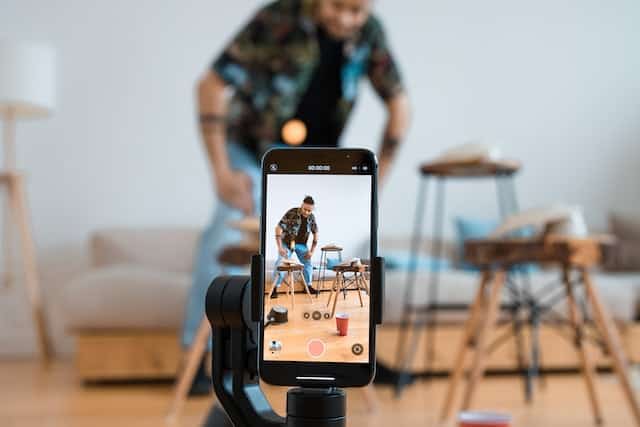“Reverse SEO Outreach” High Quality Backlinks

Reverse SEO outreach is a strategy few online entrepreneurs know about.
It helps achieve high quality backlinks and higher search engine rankings because users of this strategy become valued sources for journalists and bloggers.
What is Reverse SEO Outreach?
Reverse SEO outreach is where you publish long-tail keyword-targeted content on your domain, specifically regarding niche and consumer statistics.
You aim to rank your content at the top of Google search results.
Whenever news writers or blog owners are looking for authoritative content they can link to showcasing these statistics (which bolsters their content). Consequently they’ll find your posts at the top of Google results, helping you get the coveted backlinks everyone is after.
The Problem with “SEO Outreach”
Every online entrepreneur with a website is looking for ways to increase the effectiveness of their search engine optimization (SEO) efforts.
They can use on-page SEO as well as a backlink strategy.
But getting those prized backlinks from top authority domains is difficult for many to accumulate.
The AI-Assisted Solutions for Reverse SEO Outreach Posts
Now you can always go out and do a deep dive into this type of research yourself. But artificial intelligence tools make it easy for you to compile, too.
It can help you initially brainstorm these reverse outreach ideas for your niche.
Stop spending tons of time crafting emails to beg people to give you a backlink. With the reverse outreach strategy, you create a post that other people are hungry for, which ranks very quickly in Google, so they automatically give you a backlink.
Best Ideas for Reverse SEO Outreach Content Using AI
Artificial intelligence tools are familiar with reverse outreach and help you develop ideas to benefit you with this strategy.
You’ll be looking at ideas specifically beneficial to journalists and other bloggers.
These ideas are often cutting-edge information, news, and statistics about your niche topic.
Your goal is to get traffic to your domain, so this isn’t something where you’re trying to beat competitors for a short, top niche keyword or two-word phrase.
There are different ways you can look for ideas for reverse outreach content.
One is through using AI, and you can also use keyword tools, search engines, and industry publications.
We can prompt AI like this:
“I want to create a post on my blog that will be good for reverse outreach where journalists and bloggers want to use my content as a resource. My blog is about weight loss. What kinds of topics would be good for a reverse outreach post?”
You’ll get several ideas using ChatGPT and Google’s Bard, some of which will be good and some too generic.
For example, one is to write a post called “The Science Behind Successful Weight Maintenance.”
Having scientific research might be a great strategy. AI will also tell you to position yourself with an expert industry interview, research-based content, and a case study.
If you want to get more specific, ask AI:
“I want to do something where I can showcase many statistics. What do journalists and bloggers often look for regarding statistics and consumer data in the weight loss industry?”
Then you get some great ideas such as:
- Obesity and weight loss trends (including the prevalence of obesity, overweight populations, or trends in regions or demographics)
- Success rates of different weight loss methods
- Consumer behavior and preferences based on weight loss purchases or the popularity of products
- Health impacts of obesity and weight loss (so the adverse effects of obesity and positive impact of weight loss)
- Weight loss industry and market size (including the growth of the industry, trends, analysis, and emerging technology)
- Factors that contribute to obesity
- Cost of weight loss programs and products
- Side effects of weight loss medications
Add Google Search to the Mix
You can also go to Google and look up the weight loss industry, the main page, the images, and the news. You’ll see the entire Time magazine on “The Science of Weight Loss,” so AI thinks that will be a good topic.
When you look up that phrase, you see that links are pointing to topics like:
- Latest Global Weight Loss and Weight Management Market
- Weight Loss Services in the US.
- US Weight Loss Market Size
- What Age Group Is More Likely to Follow a Diet
- Weight Loss Supplements Market
- Weight Loss Shots Causing Diet Industry to Panic
Right now, in this particular industry, there is a fear of failure for many diet brands after Jenny Craig had to shutter its doors, which many believe is caused by semaglutide shots like Ozempic, Wegovy, and Mounjaro.
Because it’s a popular topic, it might be an excellent concept for a reverse outreach article. It also fits trends and consumer behavior idea AI identified for us.
If you’re in a different niche, you can ask AI:
“I’m in the work-at-home Internet marketing niche. I want to write an article that journalists will link to that has something to do with data or statistics they look for in this niche. Give me some ideas for articles about this.”
You’ll get ideas from AI like:
- The rise of work-at-home popularity (and what contributed to its growth)
- Salaries and earnings of work-at-home marketers
- The impact of work-at-home opportunities on corporate jobs
- E-commerce trends that showcase consumer behavior, market size, etc.
- The rise of influencer marketers and the impact brands are seeing.
You can go on Google and type in working from home, and you will see several results under the news tab from professional news sites like CNBC and NPR, for example.
Clicking through these articles, you will know where the statistics are used, such as the decline in the percentage of workers willing to come into the office now or the number of remote workers according to top-ranked cities.
Some will be easy to spot in a numerical type. Still, others will be written, such as, “One in four new job postings in Washington DC advertises remote work arrangements, compared to one in fourteen in Australia.”
So you might devise an idea to run by AI like this:
“I want to write a reverse outreach article about the rise in the number of people who want to work from home. What is some common data journalists would want to see in this type of article if they were to link to it from their site?”
Your AI tool will then give you a basic understanding of what types of things they would be looking for, such as:
- Statistics about the number of people who want to work from home
- Data about the reasons why they want to work from home
- Data about the challenges of working from home
- Data about the future of working from home
- Numbers that show which industries and sectors are giving their employees remote work opportunities
- Data and statistics about work-at-home satisfaction and productivity
- The impact employers are seeing in terms of employee retention by not offering remote work
So to find the best ideas, you can ask AI for them, conduct some research of your own, feed it back into AI, and come up with good article ideas. We will prompt AI for a final idea by asking this:
“Based on the following bullet points, what are some good article ideas and a long tail keyword phrase I could target to rank high for content on a topic encompassing these issues: (then insert your final bullet point list from above).”
AI then gives you ideas such as:
- The Rise of the Work-From-Home Workforce (keyword phrase: work-from-home statistics)
- The Future of Work: Will We All Be Working from Home?” (keyword phrase: future of work from home)
- Which Industries Offer Work from Home Opportunities? (keyword phrase: work from home opportunities by industry)
- Are Employees More Productive When They Work from Home? (keyword phrase: work from home productivity)
- How Not Offering Remote Work Hurts Employee Retention (keyword phrase: remote work and employee retention)
- The Growing Desire for Remote Work: Statistics, Trends, and Insights (keyword phrase: statistics on the increasing demand for remote work)
- Why Remote Work is on the Rise: Data and Factors Driving the Shift (keyword phrase: data on the reasons behind the rise in remote work preferences)
- The Future of Remote Work: Data-Driven Predictions and Projections (keyword phrase: statistics and trends indicating the future of remote work)
For the weight loss one, you might ask:
“What statistics do people want to know about semaglutides for weight loss?”
AI would then deliver article ideas for that topic, including ones like:
- Comparison of Semaglutides with Other Weight Loss Treatments
- Effectiveness of Semaglutides for Weight Loss
- Safety and Side Effects of Semaglutides
- Long-Term Sustainability of Weight Loss with Semaglutides
- Patient Satisfaction and Quality of Life Improvements with Semaglutides
- Adherence and Dropout Rates with Semaglutides
It then gives you the statistics people will want and the information to pull from, such as clinical trials or real-world studies, regain rates, psychological effects, incident reports, and more.
Once you select an idea, you can either conduct your research or have AI do the research and outlining for you.
If you have it research, use a tool that can tap into current information, not others trapped in 2021 databases for information.
Get a Comprehensive Data Outline Using AI
You’ll want to choose a topic and have AI help you formulate a good outline addressing all the information a journalist or fellow blogger might want to see so they have a valuable link to include in their content.
We will prompt AI like this:
“I want to write an article on The Effectiveness of Semaglutides for Weight Loss. Create an outline that uses data people would want to know, such as the cost, frequency of use, who is buying it, the growth in the use of this method, the market size, how long it takes to work, how this method compares to other weight loss strategies in terms of popularity, etc.”
AI then comes up with a comprehensive outline with the main ideas and the bullet points of what to include in each main subheading. For example, it showcases items to add like this:
II. Effectiveness of Semaglutides
A. Weight Loss Results
1. Present data on average weight loss achieved by individuals using semaglutides.
2. Highlight significant weight loss milestones and the timeline of progress.
B. Comparative Analysis
1. Compare the effectiveness of semaglutides to other weight loss treatments (e.g., diet, exercise, medications).
2. Provide statistics on weight loss outcomes and success rates for various strategies.
It gives you specific instructions about the data you need to gather in your research (or have AI collect it). So when you go back to a current AI tool and ask for:
“…data on average weight loss achieved by individuals using semaglutides”
You can plug it into the right place.
Statistical results
It will tell you:
- In a clinical trial of 1,961 adults with obesity, those who received semaglutide 2.4 mg once weekly lost an average of 12.4% of their body weight over 68 weeks, while those who received a placebo lost an average 2.4% of their body weight.
- In another clinical trial of 1,253 adults with obesity, those who received semaglutide 1.7 mg once weekly lost an average of 10.6% of their body weight over 68 weeks, while those who received a placebo lost an average 2.4% of their body weight.
You can ask where it got the data from, and it will quote Obesity Reviews 2021 and an article from the New England Journal of Medicine in 2020. You can ask for more recent data, which returns some statistics from The Lancet in 2022.
Double-Check the Information AI Provides
You’ll have to double-check that the information it returns exists because AI tends to make up things whenever it doesn’t have the information you requested.
But what’s good about this is that even if it returns fake facts, and you discover them, you then know what kind of information to search for.
If you look at that last item in the bullet point above, it shows you what wording to use so that you can go to Google and type in “clinical trial semaglutide average weight loss 2023”.
It returns an article published in January of 2023 about a 2-year study on the results of semaglutides at 2.4 mg. You then have some statistical data and research to discuss in your content.
AI may not be able to give you the exact data that are always up to date, but its outline tells you what needs to go into the piece to make it a practical example of reverse outreach content.
Have AI Draft the Content for the Potential Reverse SEO Outreach Backlink Source
You can write the content yourself, or if you want AI to do it for you, you can! If you found your studies, you can prompt AI like this:
“I want you to use this study and write an article about weight loss outcomes related to using semaglutides: https://onlinelibrary.wiley.com/doi/full/10.1002/oby.23673, for example.”
Or you can tell it to use the data in the study to support your content; however you wish to use it.
For example, if you want to prove that semaglutides are working, especially in comparison to placebos, you can pull it from that study for the support data that will help you secure more backlinks.
Once you have the outline AI wrote for you, you can plug in the outline section-by-section and prompt AI by saying:
“Write this part of my article for me: Introduction – briefly introduce semaglutides as a medication used for weight loss, highlight the growing interest and demand for effective weight loss strategies, present the article’s purpose: to explore the effectiveness of semaglutides based on key data points.”
It automatically pulls in a lot of statistical data, such as People who took semaglutides lost an average of 15% of their body period over 68 weeks. You can also find areas to have it expand on.
For example, whenever AI says: “Obesity is a major public health problem,” have it expand by saying:
“Expand on the part where you say: Obesity is a major public health problem and give statistics about the problem.”
Then it comes back with things journalists will want to link to, like the fact that more than 1/3 of adults in the US are obese, the steady increase over decades, the cost of obesity at over $150 billion annually, and so on.
Make Sure to Optimize Your Reverse SEO Outreach Posts for Both the SERPs and Journalist Research
There are two ways you want to optimize your reverse outreach content. The first is for search engines, and the second is for how journalists and bloggers think.
For journalist insight
Look up your topic and visit the news section to get a journalist’s insight.
Go to links about the subject to see what kind of rhetoric they use. For example, if we’re targeting semaglutides, you can type that word into Google and click the news tab.
You’ll find a Business Insider article, and you can read through and spot specific wording, such as:
- The price of semaglutides
- Three times higher in the US than in the UK.
- Prices based on certain factors
- Variation in prices
- Calculated the cost of the drug
You can work those into your content.
For SEO insight
You can also feed your article back into the AI machine and ask how to improve its SEO.
It might offer advice on changing the keyword phrases you’re targeting, advice on headers and subheadings, alt tag recommendations, title tag info, etc.
AI can write your meta description for the content piece, too. Just prompt it with the following:
“Write the meta description for this article.” It might come back too lengthy. You can redirect it like this: “Redo it shorter with an emphasis on statistics in the first part.”
That way, the portion shown to search engine users (journalists and bloggers looking for a statistical article they can link to) will see that yours is a well-researched piece with lots of data included.
So if we target the phrase: semaglutides effectiveness for weight loss, we can paste that into Google and see who is ranking. Past the sponsored posts, you’ll see other sites, and you can use a tool online to check the backlinks they’re getting.
These tools can check an overall domain or the URL you want to compete for.
You can look at the results to see what keyword phrases those pages rank for and study the page itself to see what journalistic keywords it uses.
You can even run the pages through AI to analyze this information to help you create a competitive plan to topple the other site by outranking it with a better SEO plan.
Verify and Gather the Right Data For Your Reverse SEO Outreach Posts
You never want to take the data AI or Google gives you and trust it fully. If you create an authority page journalists link to, you must pull in reliable and accurate information.
Make sure you double-check the answers. There are different ways you can find this information.
For example, look up government or clinical trial information from trusted sources instead of taking some random blogger’s word about semaglutides data.
You can also go to the published pieces the company or an industry publication has put out. Companies will usually provide this data somewhere on their site.
You can use Google: Mounjaro statistics for data about a brand name or semaglutides.
Eli Lilly creates it, so you can find up-to-date publications like this: https://www.statnews.com/2023/04/27/eli-lillys-mounjaro-succeeds-in-second-weight-loss-study-paving-way-for-fda-review/ that discuss clinical trials.
Sometimes, you can find data to use in your content by looking at shareholder publications by a company. And, of course, if you look up keywords like semaglutide data press release, you’ll also find some interesting information.
This pediatrics article has a wealth of data because it has approval for patients 12 and up. It references studies in The New England Journal of Medicine that you can also point to.
Have AI Give Graphic Design Ideas for Your Reverse SEO Outreach Statistics Posts
Including graphics in your reverse SEO outreach posts is a great way to break up the content and help the reader absorb information more easily.
You can have graphics such as tables, graphs, charts, etc., that show things your readers may want to see at a glance.
Then, you can take the information accumulated for the graphic and either design it yourself or hand it off to someone on a freelance service provider’s site like Upwork or Fiverr.
For our example, we’ll prompt AI like this:
“I’d like to include some chart, table, or graph about using semaglutides for weight loss. Give me some ideas on what would go well in my article.”
It gives us lots of great ideas, such as:
- A chart showing the average weight loss of people who took semaglutides in clinical trials compared to people who took a placebo
- A table listing the side effects of semaglutides
- A graph showing the cost of semaglutides over time
- A chart showing the number of prescriptions written for semaglutides over time.
- A table comparing semaglutides to other weight loss medications.
- A graph showing the effectiveness of semaglutides in different populations, such as adults with obesity or adults with type 2 diabetes
Including a graph like this, or some chart or table, will help your readers trust your information more because it reflects professionalism only found in top content pieces.
Prompt AI with the task of creating whichever one you want to include like this:
“I’d like you to create the first option.”
It will then create the chart for you. You can go through each one and have it add more information that you can include but don’t overdo it and make your content piece look cluttered.
Sometimes, it will deliver a summary of the information but not the actual graphic.
For example, when we prompt AI to write the graph showing the cost of semaglutides over time, it summarizes the data.
Still, the chart only says this: [Image of a line graph showing the cost of semaglutides over time; the cost has increased steadily since 2018.]
If this is the result, redirect your AI tool like this:
“Give me the information to put in the line graph.”
You may have to create the graph yourself, but it will give you the information that includes the year and cost of semaglutides (per month) like this:
- 2018: $1,000
- 2019: $1,200
- 2020: $1,400
- 2021: $1,600
- 2022: $1,800
It summarizes that the cost has increased steadily to about $200 per year. Therefore, an estimated 2023 cost would be $2,000 monthly.
This assumption may be inaccurate, so you must research the information to verify it.
Also, the cost may differ from region to region, country to country, or pharmacy to pharmacy.
There are many free and paid online tools that you can use to plug in the information AI, or your research gives you to create the tables, graphs, and charts that will take your content to the next level.
AI Can Write the Script for a High-Ranking Reverse SEO Outreach YouTube Videos
Remember that many professional websites want to include a link to a website and embed videos they find, too.
You want to go the extra mile to have a video on the long-tail keyword phrase you’re aiming for because YouTube is the second largest search engine in the world.
You can either feed your original article back into AI and have it write the information as a video slideshow or have it come up with something unique for your video and then embed that into your blog, too.
Prompt AI like this:
“I want to create a YouTube video on using semaglutides for weight loss, and I want it optimized for that keyword phrase. Can you create a slideshow with the text, narration, and image ideas on this topic for me?”
The slide information will look like this:
Slide 1:
Title: What Are Semaglutides?
Image idea: Display an image of a semaglutide medication box or a visual representation of the drug.
Narration]
“Semaglutides are a class of medications originally used to treat diabetes, but recent studies have shown their effectiveness in promoting weight loss as well. These medications mimic the effects of a hormone called GLP-1, which helps regulate blood sugar levels and appetite control.”
You can then hand it off to a freelance video creator on Fiverr or use a tool like Canva to create the slideshow, screen capture, and record it as you narrate it using a tool like Camtasia or CamStudio.
Have a Plan for Your New Visitors
You don’t want to go to all this effort to use AI to help you create reverse outreach posts only to see people land on your page and bounce away once they know the information you’ve provided.
Backlinks are great for SEO purposes, but you must plan for people to click through on those backlinks – what will you use as your strong call to action to benefit more than just with the link itself?
Get interested parties on your list with reverse SEO outreach
The best action is to have an opt-in form directly on that page. Ensure you have one in the sidebar, one below the content, and one as a popup or slide-in.
If you can get these people on your list, you can cater to their needs for months and years.
Offer a compelling lead magnet
To do that, you have to have an enticing lead magnet. If you don’t have one yet, AI can do that work for you.
You can prompt AI like this:
“I’m publishing a blog post about the effectiveness of semaglutides for weight loss. When visitors come, what good ideas for a lead magnet might the audience appreciate?”
You’ll get ideas like:
- Semaglutides for Weight Loss: A Quick Start Guide
- Semaglutides and Healthy Eating Recipes
- Semaglutides and Fitness: Workout Routines for Weight Loss
- Semaglutides FAQ: Your Essential Guide
- Semaglutides and Weight Loss Tracking Journal
These are all things AI can help you create. Tell it which one you like, then ask it to outline it for you.
Ensure you want everything included, and then have it completed in a chapter-by-chapter format so that you can turn it into a lead magnet offer.
Implement a Quarterly Update for Your Reverse SEO Outreach Posts
Because statistics and data information is so timely, you want to ensure you implement frequent updates of the posts you use for reverse outreach purposes.
You want your blog post to show the latest date of the published update so journalists and bloggers know they are getting the new information.
It’s best to do this at least quarterly so that you have gathered the latest statistics and information needed for the blog post every three months.
You should be able to go in and replace outdated information with new data.
But you may also quickly search online and ask AI for additional data that may not currently be in your blog post but would be good to add to the update.
Tell Bots You’re Up-to-Date
Freshening up your content also tells search bots that you are on top of your information, and they will see that you have updated your post, which reflects well on you for search engine optimization purposes.
Remember that a reverse outreach strategy will not materialize for you overnight.
You first have to get your content ranking well on Google.
When journalists and bloggers find it, if you have leveraged AI to assemble a well-researched piece, you stand a good chance of getting the backlink you deserve.




